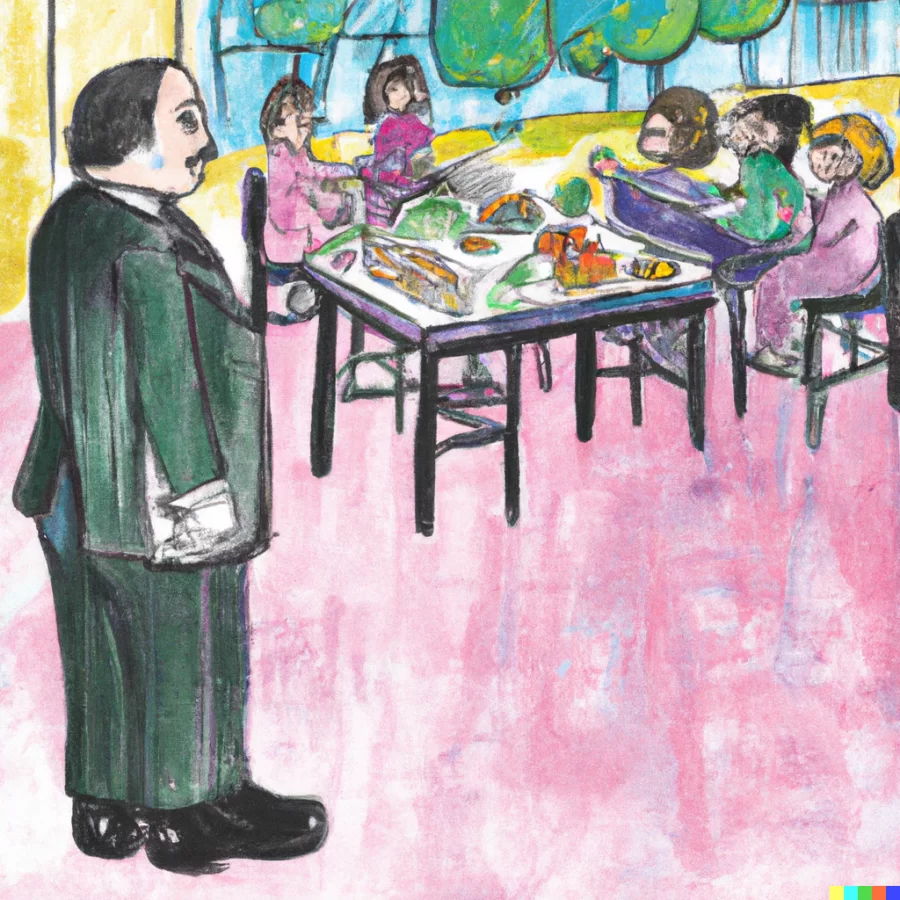Free Lunch?
April 9, 2023
Think back to the last time you were starving.
Could you think about anything else? Perhaps you’re one of the, unfortunately, common people who get hangry, or short tempered after you haven’t eaten for a while?
Now, imagine you’re a kid. This feeling of hunger is not an unfortunate result of poor planning or paralysis in picking a restaurant, but rather a perennial and gnawing fact of life. You can’t do anything about this pain, and your parents try their hardest to make sure the feeling never comes. It still does, and pretty often too. You have nowhere to turn, and none of your peers seem to have the same problem that you can tell.
You are completely and totally stuck. You don’t want to do much, because you’re always so hungry, so you can’t ever seem to do well in school. You don’t participate in many after school activities if at all, again because it takes everything you got just to finish the regular school day.
Welcome to the life of one in eight American Children. Expecting someone to live life normally while facing food insecurity is unrealistic. Expecting a child to do the same is just plain sadistic. Yet, in the wealthiest country in the history of planet earth, we demand that 9,000,000 children get out of bed, go to school, and act like everything is fine while wondering when and what they will eat next.
In the United States, policymakers of this generation have been dealt a raw deal of problems. So many of them are systemic, so many of them are global, it often seems incredibly unrealistic to expect any resounding solutions that provide quick and provable results. Legislators architect packages with 30 year goals and 13 figure price tags, all for years of drafting and vision to be voted down due to some partisan bickering.
It’s understandable to look for a convoluted and multi-step solution to everything in the current policy-making environment. There’s good news for congress on the hungry kids issue, though. There is an instant, cost effective, and simple band aid that can be instituted right now to help address the issue. It’s popular, it’s worked before, and it represents an investment that will pay incomprehensibly large dividends in decades.
Kids are hungry? Buy them lunch.
It really is that simple.
More precisely, buy school breakfast and lunch that is then distributed to any public school student who wants it, completely free.The nationwide federal free lunch program was instituted during the pandemic to take one more stressor off the shoulders of exhausted and financially strained parents.
There isn’t much explanation needed. In fiscal year 2020, the National School Lunch Program served over 2.4 billion free or reduced school lunches. In fiscal year 2021, they served 2.17 billion free or reduced school lunches.
Two polls conducted on the program both came back overwhelmingly positive: 74%/76% (two separate polls) of Americans support the program, including 67% of people without kids enrolled in school.
The program has been so popular in fact, that states instituted their own versions of the program after funding for it lapsed in August 2022, right before the new school year. Colorado included a ballot measure asking whether the state should institute a moderate increase of the income tax on the top 3% of earners in the state to fund the program in a ballot measure titled Proposition FF (not sure what the FF stands for, but hoping it’s free food). The proposition won, and the program launched, along with others in California, Maine, and a handful of other states.
The free lunch program is brutally simple, fiscally realistic, and incredibly popular. Congress did not renew it.
One of the most recent adopters of a universal free lunch program is Minnesota. Governor Walz managed to garner some positive media attention after a gaggle of children smothered him with hugs right after he signed the free lunch bill into law. Arkansas Governor Sarah Huckabee Sanders signed a different law also relating to children in the same week: it relaxed labor laws for kids aged 14-16 in a myriad of ways.
I wonder why it’s so important to streamline the path to the workforce for kids in Arkansas. Perhaps because they need to work to afford lunch? Just a thought.
Read more by this author on dracoslist.com


